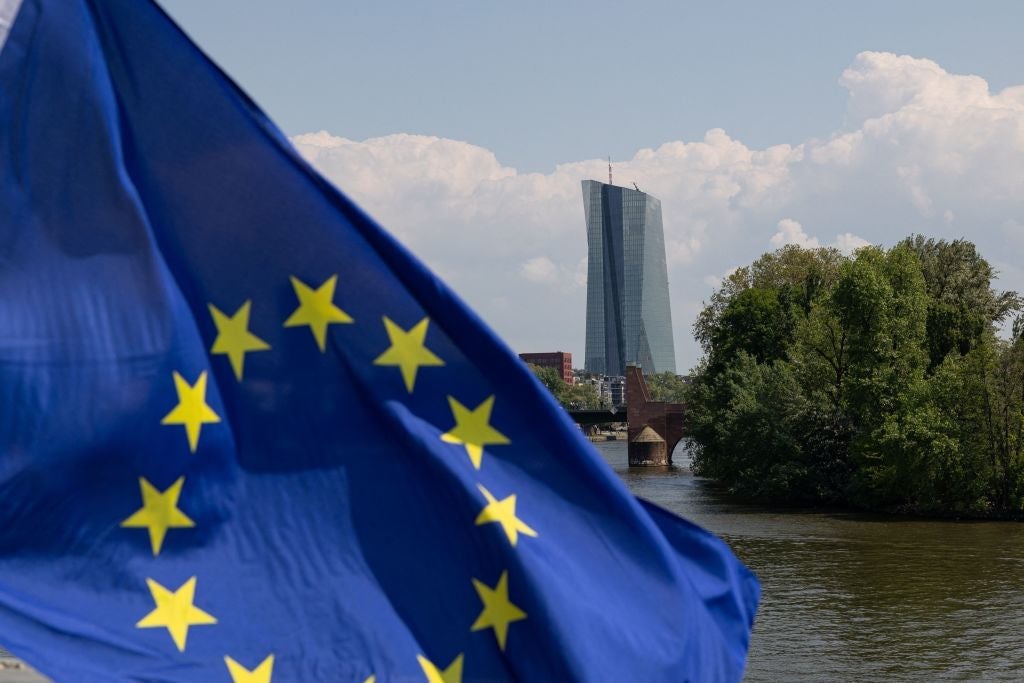
Amid rising inflation, the European Central Bank (ECB) has opted to raise interest rates for the first time in more than a decade. The 0.5 percentage point hike was twice as large as the rise mooted by ECB officials just weeks earlier, a sign of the eurozone’s hardening line on monetary policy.
Bank officials explained the rapid increase in rates as a result of their inability to raise rates in June, owing to earlier promises that rates would not rise until July.

Access deeper industry intelligence
Experience unmatched clarity with a single platform that combines unique data, AI, and human expertise.
Compared with the US Federal Reserve and Bank of England, which have raised their policy rates by a respective 1.5 and 1.25 percentage points since the start of 2022, the ECB’s approach remains relatively dovish.
One likely reason is that Europe’s current bout of inflation owes far more to external factors. In the US and UK, food and energy prices are responsible for just under half of inflation in the year to June 2022, but in Germany, Greece, Spain and Italy, the figure is more than two-thirds. When food and energy are excluded, none of those countries have seen inflation significantly above target.
Inflation in the food and energy sectors has largely stemmed not from excessive demand but restricted supply, a direct consequence of Russia’s war in Ukraine. Easing those pressures will depend not on monetary policy but diplomacy and the progress of the war.

US Tariffs are shifting - will you react or anticipate?
Don’t let policy changes catch you off guard. Stay proactive with real-time data and expert analysis.
By GlobalDataThe difficulties of finding a common EU fix
Another reason for the ECB’s more cautious approach is the structure of the euro area. As a union of states sharing a common currency but issuing their own sovereign debt, the eurozone faces the perennial issue of spreads.
Italian bonds, for instance, typically fetch higher yields than German ones, owing to differences in perceived risks. When that gap grows larger, implementing a pan-eurozone monetary policy becomes much more challenging. Germany might want the ECB to raise interest rates in order to tackle inflation, but an Italian government already handing out generous yields to investors could be pushed into default.
The spread on Italian ten-year bonds has doubled since October 2021, including a particularly sharp increase in recent weeks as the resignation of Prime Minister Mario Draghi prompted a dramatic sell-off of Italian debt.
Crucially, however, the announced interest rate rise came alongside a new tool for Europe’s central bank, the transmission protection instrument (TPI). The TPI will allow the ECB to bulk-buy bonds from governments struggling with rising yields, a measure long resisted by the bloc’s monetary hawks.
The TPI should give the ECB greater room to reduce spreads without forcing the governments of southern Europe into deeply damaging austerity programmes. Assistance will, however, be conditional on countries such as Italy sticking to the EU’s fiscal rules and meeting the conditions of the bloc’s recovery fund.
That the TPI was announced in tandem with an unexpectedly sharp increase in interest rates did not go unremarked, with speculation that the measures were two sides of a single bargain between the bloc’s monetary hawks and doves. Whether that political bargain will hold over the coming months, and whether the TPI will survive anticipated legal challenges, remains to be seen.







